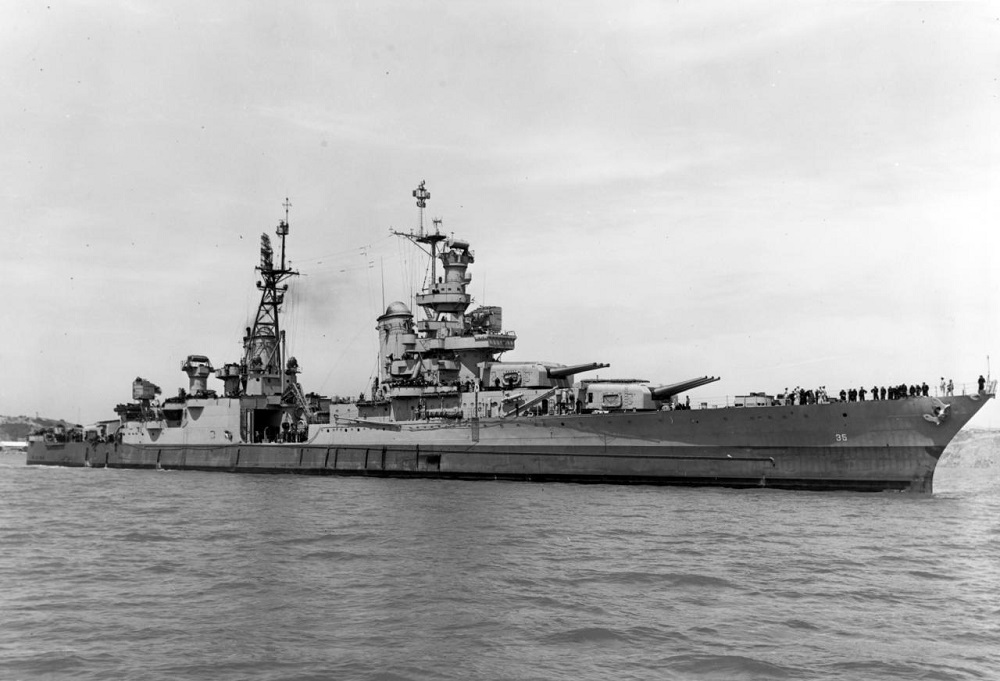The wreckage of a US warship that was sunk by a Japanese submarine in World War II was found on Saturday more than 18,000 feet (5.5 kilometers) below the surface of the Pacific Ocean, the Navy said.
The USS Indianapolis was sunk by Japanese torpedoes in the final days of the war.
The heavy cruiser, with 1,196 sailors and Marines on board, was sailing the Philippine Sea between Guam and Leyte Gulf when two torpedoes from a Japanese submarine struck just after midnight on July 30, 1945.
It was returning from its mission to deliver components for the atomic bomb that would soon be dropped on the Japanese city of Hiroshima.
It sunk in 12 minutes, according to the Naval History and Heritage Command in Washington. There was no time to send a distress signal, and four days passed before a bomber on routine patrol happened to spot the survivors in the water. By the time rescuers arrived, a combination of exposure, dehydration, drowning and constant shark attacks had left only one-fourth of the ship’s original number alive.
The sinking of the Indianapolis remains the Navy’s single worst loss at sea. The fate of its crew — nearly 900 were killed, many by sharks, and just 316 survived — was one of the Pacific war’s more horrible and fascinating tales.
After a Navy historian unearthed new information in 2016 about the warship’s last movements that pointed to a new search area, a team of civilian researchers led by Paul Allen, a Microsoft Corp co-founder, spent months searching in a 600-square-mile (1,500-square-kilometer) patch of ocean.
With a vessel rigged with equipment that can reach some of the deepest ocean floors, members of Allen’s team found the wreckage somewhere in the Philippine Sea on Friday, Allen said in a statement on his website. The statement said the Navy had asked Allen to keep the precise location confidential.
Allen said that the discovery was a humbling experience and a means of honoring sailors he saw as playing a vital role in ending World War II. “While our search for the rest of the wreckage will continue, I hope everyone connected to this historic ship will feel some measure of closure at this discovery so long in coming,” he said.
Identification was easier than in some deep-sea expeditions: some of the exposed wreck was clearly marked with Indianapolis signage, according to photographs shared by Allen and the Navy.
“It is exceedingly rare you find the name of the ship on a piece of the wreckage,” Paul Taylor, a spokesman for the Naval History and Heritage Command, said in a telephone interview. “If that’s not Indianapolis then I don’t know what is.”
The Navy said it had plans to honor the 22 survivors from the Indianapolis still alive along with the families of the ship’s crew.
Over the years numerous books recounted the ship’s disaster and its role in delivering key components of what would become the atomic bomb “Little Boy” to the island of Tinian, the take-off point for the bomber Enola Gay’s mission to Hiroshima in August 1945.
Documentaries and movies, most recently “USS Indianapolis: Men of Courage” (2016) starring Nicolas Cage, have recounted the crew’s horror-filled days at sea. The Indianapolis sinking also was a plot point in the Steven Spielberg blockbuster “Jaws” (1975), with the fictitious survivor Capt. Quint recounting the terror he felt waiting to be rescued.
